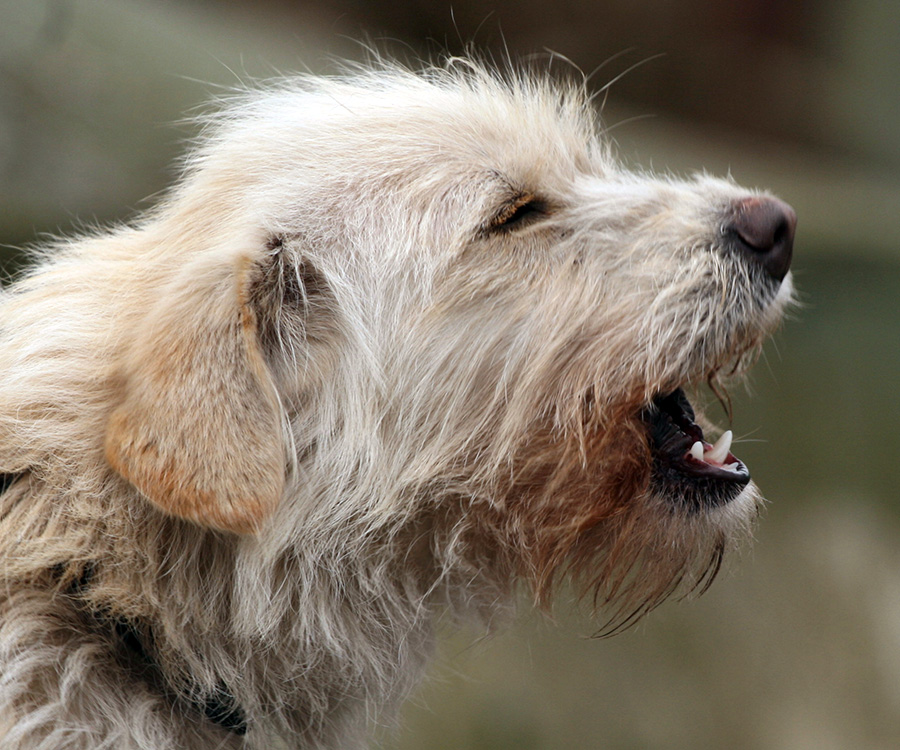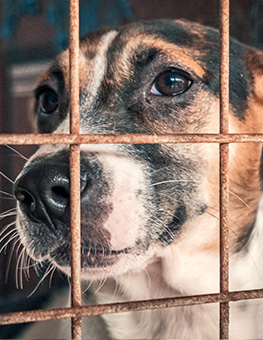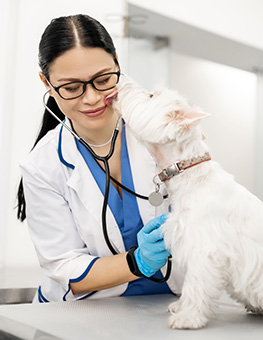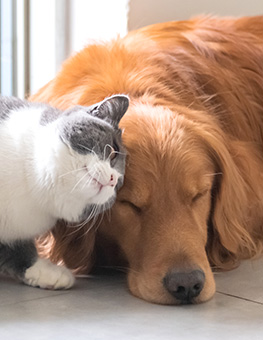What Your Dog’s Sounds Are Telling You
Dogs are great at telling you what they need, if you know what to look for. Between barking and growling and whining and sighing, your pet may be communicating much more than you realize.
Dog sounds can be hard to translate. At times these sounds may be confusing–to you as a pet owner. Once you understand what your pup is trying to say, however, you’ll have a better grasp on what they need or what they’re trying to communicate.
Possible Meanings of Different Dog Sounds
Barking

Distinguishing different dog sounds, such as barking, require listening to the variations in intensity and length.
Depending on the breed, a dog’s bark can be quite unique and range from a small yip to a deep woof. But despite the variety of barking, a dog’s barks are mostly used to get someone’s attention or make its presence known.
There are three things to listen for when assessing your dog’s barks: frequency, duration, and pitch. These variations in bark intensity and length are great indicators of what your canine friend is telling you.
Here are some common bark examples and what your dog is likely saying:
- Multiple barks broken up with pauses are a familiar sound for pet owners. These types of barks usually mean your dog is trying to alert the pack that something needs to be investigated.
- Single, high-pitched barks are often used as a greeting for your canine’s friends and family. Many times, it’s your dog’s best way of saying “hello” to someone they know or love.
- Low, drawn-out barking suggests your dog may be on the defense. If you hear these types of barks, it could be that your pet senses danger nearby, or is uncomfortable with a place or person.
- A single lively bark preceded by a light growl means your pup is feeling frisky and typically coincides with other kinds of playful body language.
- Multiple pauses in a long barking sequence signal that your dog is probably lonely. These barks could mean your dog would like a canine companion or needs more of your attention.
Howling
Just like its ancestors, your dog uses howling to communicate all sorts of things to its pack – and to other dogs or packs in the area.
- Sometimes your dog will howl to let pack members know where they’re at so you can be reunited.

Your dog uses howling to communicate all sorts of things to its pack.
- Howling can also be a warning to others to stay away from their territory.
- In some situations, howling can be an indication of a problem with your pet. If your pup has an issue with howling and it looks unhappy or uncomfortable, they may be experiencing things like depression, separation anxiety, or illness.
- Your dog may be howling just because howling is contagious. When one dog starts howling, others are sure to follow. Any high-pitched sound, like a siren or car alarm, can also trigger a howling session.
Whining and Whimpering
Whining and whimpering can mean a lot of different things, but it’s usually a sign that your dog wants your attention. Whether they need a good play session or simply want to be petted, fed, or noticed by their owner, whining and whimpering is a harmless way of saying they need interaction.
However, whining and whimpering can also be a sign of bigger problems, like pain, distress, or separation anxiety. Keep an eye out for other ways your pet might be expressing these emotions, such as panting, poor behavior, or an obvious change in appetite.
Yelping
Yelping is often associated with pain or fear, though it usually comes as a sudden outburst instead of a prolonged cry. A yelp is meant to get your attention immediately and can be triggered by everything from a bite, sting, or other type of unexpected injury. But it could also mean your pet was surprised or frightened by something in their environment.
Yelping isn’t always a bad sign, however. Sometimes dogs will yelp with the arrival of loved ones, especially when they’ve been gone for a long time from your pup’s point of view. If you hear a quick yelp after returning from vacation or a long day at work, it could be your dog’s way of saying you were missed and they are excited to have you back!
Growling

Growling is a sign that other people and pets shouldn’t come any closer.
When a pup is feeling frisky, they sometimes share gentle growls to draw an owner’s attention, or do it simply as part of everyday play. But more often than not, a growling dog is a sign that other people and pets in the area shouldn’t come any closer.
Whether they’re protecting food and toys, upset about a bath or nail trimming, or letting strangers know they aren’t someone to tangle with, growling often boils down to a sign of a fear or frustration.
It’s important to make a growling dog feel as comfortable as possible. Punishing a dog for growling may only exacerbate the problem – next time, they might skip the warning altogether and lead with more aggressive behavior. Learning how to identify when a dog might bite is important for every pet owner and may require training to break the bad habit.
Groaning and Sighing
Lots of pet owners refer to their dogs as fur babies. And just like human children use pouting to express boredom or disappointment, dogs use groaning in situations where they aren’t getting their way. But not all dog sounds, such as groaning, always mean your pet is feeling unsatisfied.
Another reason your dog might be groaning or sighing is to express their contentment. Many dogs use groaning and sighing to communicate satisfaction after a walk, a play session, or when they’re ready to relax. As long as the groaning and sighing doesn’t persist, which may indicate pain or discomfort, your pup is probably letting you know it’s all set for naptime.
















